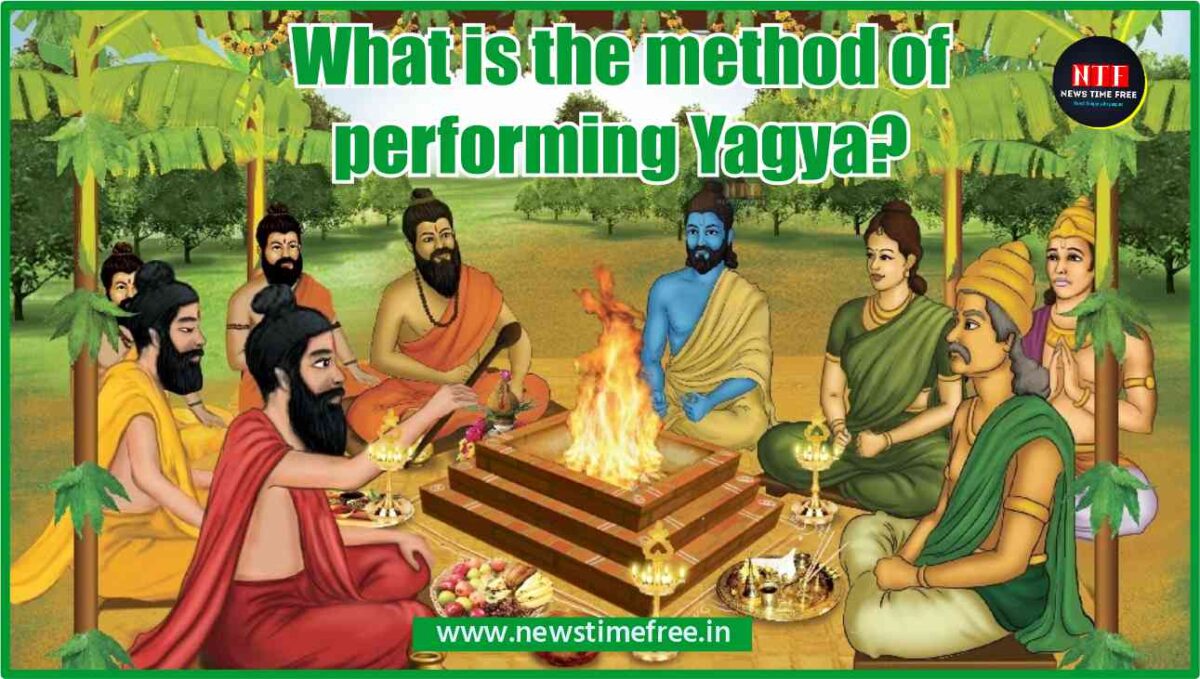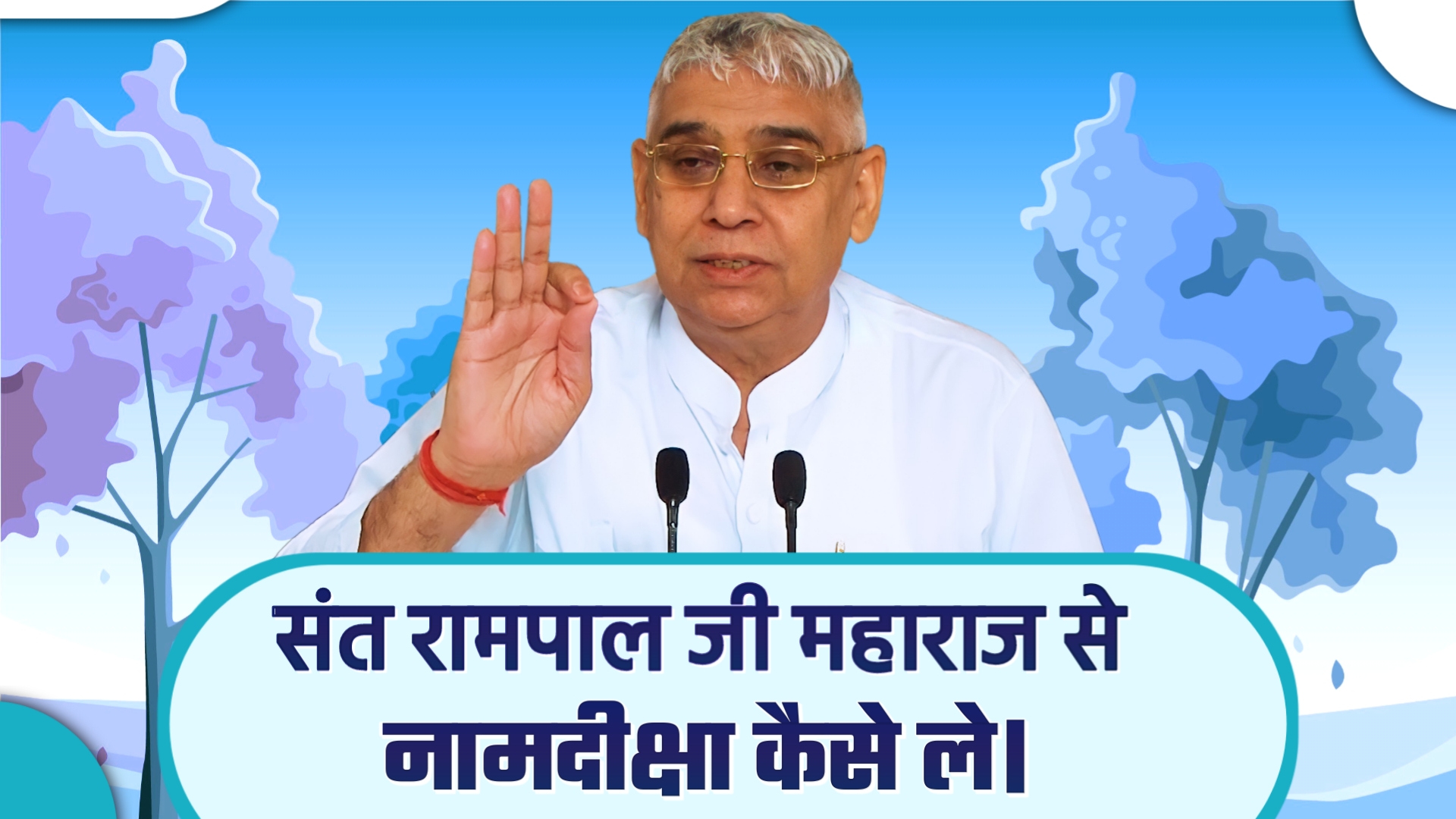Worship and devotion: Worship is an act of religious devotion usually directed towards a deity. It may involve one or more activities such as veneration, adoration, and praise.
1. What is the difference between worship and devotion?
Worship and devotion: In the spiritual path, the word ‘Devotion’ is also heard mainly along with ‘Worship’ despite being different from each other, both the words always go together. Worship means having knowledge of the qualities of God whom we want to attain, then ardent, dedication, faith and unwavering reverence for his attainment is called worship. Devotion means the effort made to attain God.
Example: – Just as someone needs drinking water, he came to know that there is drinkable water down on the earth. Water is a worshipable substance for him. The effort made for water attainment is called ‘Devotion’, such as putting the pipe in the ground, then putting a hand pump on top and running the pump with the handle. Water is worshipable, the devotee who desired water became a seeker and The effort he made to get water is called Devotion. In short, the desire to get water is called Worship’. Thus the strong desire of the devotees to attain God is called worship. Spiritual activities performed to attain God is called Devotion.
2.What spiritual activities have to be performed in the Spiritual path?
Worship and devotion: In the spiritual path, religious texts/ Scriptures and Sat Guru/ Complete Guru/ Tatvadarshi Saint have great importance. Devotees should only perform devotion according to the scriptural method by taking initiation from Satguru. To date, all the great men and saints who have attained God, have divided spiritual practice into four spiritual activities.
1. Recitation:
Self-study of scriptures is called recitation. Like reading the shlokas(verses) of Shri Madbhagavad Gita daily. Some devotees say that we recite one chapter of the Gita every day. Some devotees (sadhaks) recite Veda mantras daily. Some devotees regularly recite some text or words from the nectar of a saint. Muslim devotees recite some verses from the Quran Sharif or perform Nimaz (praise the Lord) for five times.
All this is called Reciting. Reciting a book in a monolithic way or reciting the book with respect for sometime,or reading the Vedas or the Gita, all this is also called recitation. Reading Holy scriptures for the purpose of acquiring knowledge is also called reciting.
2. Jaap (Chanting):
Jaap means chanting of mantras, that is, continuously chanting the mantras orally or chanting the mantras carefully in the mind itself. The chanting of the initiation mantra given by a Tatvdarshi saint is called ”Jaap”. This is done in two ways:- Jaap and Ajapaa.

Jaap =pronouncing the mantras with tongue,i.e. orally and Ajapaa = chanting the mantras through the breath. It is only beneficial to chant the mantras that are according to the scriptures, that is, mantras should be scripture certified and It is necessary to know which mantras are mentioned in the scriptures.
3. Tap (Austerity):
“Tapas” also has a very important role in the spiritual practice done for devotion, but this tap (austerity) is not that which is done stubbornly while sitting in one place, which is harmful as it is against the scriptures. This is not the austerity which is said in Gita Adhyay 17 Shlok 5-6 that those who practice extreme austerity without scripture, make deities sitting in the Kamal / Chakra of the body and me (Kaal) sad, and know them as demons.
This austerity is the austerity that has been mentioned in Gita Adhyay 17 Shlok 14 to 16, and there is a law to perform that real “austerity”. The conclusion of Gita Adhyay 17 Shlok 14 to 16 is that it is the austerity of the body to worship and serve the beloved children of the Lord who come to the Satsang. Whatever difficulty comes in saying true spiritual knowledge, it is the austerity done by speech. Worldly desires arise in the mind, to overcome them through true spiritual knowledge is the austerity of the mind.
Just as the mind is attracted towards cars- big houses or any other worldly enjoyment, then by making true spiritual knowledge as base one should keep contentment in the mind. In giving up alcohol, tobacco, and meat, one has to struggle with knowledge with the mind, that is austerity done by the mind. Doing this penance is called austerity according to scripture.
4. Yagya (Sacrifice):
The fourth and last action is Yagya (religious sacrifice), which is beneficial only if it is performed according to the instructions of the Satguru. At present, the meaning of Yagya has remained only for Havan (Offering prayers to God in front of fire), but the spiritual sacrifice, which is also described in our religious texts, is far away from the rituals of Havan, etc.
3. What is the meaning of Yagya?
Yagya means religious rituals, the religious rituals which the Tatvadarshi saint certifies from the scriptures of all religions and tells it to his disciples. Due to the lack of True devotion and Complete Guru / SatGuru, for years, Sages, Saints, and Fake gurus have been connecting Yagya with activities like Havan, immolation, etc. But the real meaning of yagya is the religious activities performed daily for the attainment of God.
Due to lack of correct knowledge of their own religious texts / Scriptures, false gurus and Qazis have misled the Devotee society and made it difficult to attain God with different ostentation. In Fact It is very easy to attain God by taking initiation from a Tatvadarshi saint and by performing devotion and yagya etc. according to the scriptural method prescribed by him every day.
Although Salvation is not possible through yagyas, yagyas performed with true devotion are very helpful in the path of spirituality. Heaven can be attained only by the totalities collected through yagyas. Like a person is suffering from a long disease and he goes to the doctor, because of weakness, the doctor offers glucose to that person, that glucose is not an exact medicine for the disease but is helpful in treatment, similarly salvation is not possible through Yagya but For the attainment of salvation, yagya is helpful in the path of spirituality.
4. How many types of Yagya are there?
There are five types of Yagya:
1.Dharma Yagya (righteousness sacrifice): Dharma Yagya is performed in many ways. Such as feeding the hungries, feeding birds, arranging drinking water for animals, building cattle sheds, arranging drinking water for humans,
building a hospice and hospitals, donating blankets to the poor or others, In natural calamities (famine, floods) Donating clothes, food items, and medicines, helping accidental persons, etc. But on the path of spirituality, Dharma Yagya is performed only by a complete Guru and one should only donate according to instructions of a Tatvdarshi saint.
2.Dhyana Yagya (Meditation):Meditation means to concentrate the mind on something. Like sometimes we are thinking about something and standing on the road. The bus has to come and stop where we are standing and contemplating, the bus also gives the horn but we do not listen. The other person warns by holding the hand to turn aside, leaving the way for the vehicle. This is the real state of meditation.
jaise natanee chadhai baans pe, natava dhol bajaavai.
idhar udhar se nigaah bachaakai, surati baans pai laavai ।।
The meaning is that the dramatist and his wife play drama, taking a bamboo stick of about 8-9 feet in hand and placing one end on the ground,. Dramatist plays the drums. Then slowly the wife of the dramatist starts climbing on the bamboo. Her attention is not on the sound of the drum, nor on the people watching the game standing around. Her entire focus is on the bamboo.
If her attention is diverted from the bamboo even a little bit, then she falls on the earth with the bamboo in a hurry and will not be able to achieve success as a prodigy. The people watching the game are clapping, yet she does not listen to their noise. Her focus remains only on the bamboo. Similarly, contemplation of the qualities of the Supreme Soul is called meditation. This is the real “Meditation Yagya ”.
3. Havan Yagya: The burning of cow’s or buffalo’s ghee in the fire is called “Havan Yagya”. To perform the Havan Yagya, the fire is ignited by making a wick of cotton and placing it in an earthen or metal vessel (bowl) after burning buffalo or cow’s ghee and reciting the invocation: nectar Speech of complete Saint. This kind of Havan Yagya is known as Jyoti Yagya which is performed in the house of every Hindu at both times (morning and evening).

4. Pranam Yagya: On the path of devotion, the sadhak is successful only in whom there is humility (submissiveness) and there is a slave spirit We have to worship the Supreme Brahman. That’s why we bow down in the form of prostration. It has been said in Tatvagyan (Sukshma Veda) that the ego is destroyed by prostrating. Lying on the earth on the stomach, with both hands spread above the head in front, the two feet together and offering a little paw on the toes of the feet and bowing down to the Lord with folded feet and hands is called Pranam Yagya.
5. Gyan Yagya : Study of scriptures and listening satsang of a Tatvdarshi saint is called ‘Gyan Yagya’. In Gita Adhyay 4 Shlok 33, it is said that Oh Parantap Arjun! Compared to the yagyas i.e. religious actions like charity, provision of meals etc which are performed with money, the yagya of knowledge is much superior, and all the scripture-based actions in their entirety culminate in Tatvagyan / the True Spiritual Knowledge.
5. What is the method of performing Yagya?
Due to not getting a Satguru and not having complete knowledge of their own religious texts, false gurus and sages have changed the meaning of performing Yagya by trapping the devotee society in different hypocrisy. For example, there is a general belief about the yajna of meditation that sitting in one place, stubbornly trying to stop the mind is called meditation. The earlier sages performed meditation for a long time through hatha yoga.

They performed meditation to find God in the body, for the vision of God. They Saw light in the body which is called Divine Light. In the end, the sages told their experience that God is formless. After doing meditation for a few years, they used to lead a normal life. It is not meditation, but difficult austerity done through hatha yoga which is prohibited in Gita chapter 17 verses 5-6
Shrimad Bhagavad Gita Chapter 17 Verse 5: Those people who perform severe austerity devoid of scriptures and practice arbitrarily are full of hypocrisy and arrogance and also full of attachment to desire and pride of devotional power.
Shrimad Bhagavad Gita Chapter 17 Verse 6 Those Who Perform Sadhana Abandoning the Ordinances of the Scriptures, Cause Grief to the Gods and are Entitled to Hell. Know the ignorants, who trouble (torture) me and the heads of the living beings (Brahma, Vishnu, Shiv, Prakriti-Aadi Maya, and Ganesh) dwelling in the body and the Purna Parmatma situated in the heart in the body who is positioned like a thread in a cloth, to be of demoniac, who do not perform sadhana according to the opinion (injunctions of the scriptures) and adopt the whimsical way of worship and conduct.
The meaning is that the meditation which the sages used to do through hatha yoga, have not been asked to do in anyVeda or summary of the four Vedas in Shrimad Bhagwad Gita. This is the arbitrary conduct of the sages to achieve accomplishments. God can not be attained by this because in Gita Adhyay 16 Shlok 23-24, it is said that those who do arbitrary behaviour by abandoning the method of scripture, neither they get happiness, nor accomplished, nor they attain Salvation . Arjuna?The scriptures are the only proof in the path of devotion for what to do or what should not do.
It is clear from the above mention that the meditation done by the sages is meaningless because it is devoid of scripture. Whereas Sant Rampal Maharaj ji explains the real meaning of performing meditation, that contemplating on the Lord is the real meditation. Considering the attainment of God as the main objective, doing devotion while working and remembering the Supreme God is meditation.
Similarly, false gurus have misled the Devotee society by taking out the wrong meaning of Havan Yagya. The sages of the past and the present saints use wood to perform the havan. This is not a scriptural method. According to the scriptures, the fire is ignited by making a wick of cotton, placing it in a clay or metal vessel (bowl) and burning the ghee of a buffalo or cow and reciting the invocation. This is ‘Havan Yagya’.
Along with this, the recitation of Veda Mantra or Amritvani can also be done. By the way, even without speech or chanting, according to the scriptures, by burning ghee in a cotton flame, ‘Havan Yagya’ is done because burning of ghee gives benefits. If Havan is done by burning wood, then more carbon dioxide is released.
To burn one quintal of ghee, 10 kg of wood is burnt while 100 grams of cotton is enough to burn same amount of ghee and less carbon dioxide is formed in it. The proof of performing Jyoti Yagya is in Rigveda Mandal 8 Sukta 46 Mantra 10. A wick of cotton is made and placed in a bowl.
Then the flame is lit by pouring ghee while reading the invocation. It is of two types. Worshipers of deities light a crooked flame. It is said in Gita Adhyay 7 Shlok 12 to 15 and 20 to 23 that worshipping other deities is pointless. The tradition of this crooked Jyoti Yagya is ancient.
■ यह भी पढ़ें: क्या अहोई अष्टमी पूजा से आयु वृद्धि संभव है?
In the same way, without being egoistic, one should do a long obeisance or prostration without thinking about who is looking us. Lying on the earth on the stomach, with both the hands spread in front of the head By offering obeisances to the Lord with folded feet and hands, one should perform the ritual of Pranam Yagya, which reduces the ego and gives the benefit of Pranam Yagya.
Similarly, in Gita Adhyay 4 Shlok 32 to 41, it is told that: – Those who perform material sacrifices by doing arbitrary behaviour, such as getting a temple built, distributing blankets, feeding hungries somewhere. In this way the religious deeds performed with money are called Dharma Yagya (righteousness sacrifice). But before such traditional rituals can be performed, one should know the Tatvagyan.
From Gita Adhyay 4 Shlok 32 to 41, it has been said that the whole spiritual knowledge or Tatvgyan is conveyed by the Supreme Akshar Brahm by speaking through his own voice. And only a Tatvdarshi sant knows that knowledge, it is advisable to ask Tatvgyan from a Tatvadarshi saint.
After Knowing that knowledge, the Seekers do not get stuck in karma again and All sins are destroyed. By doing devotional work on the basis of that Tatvgyan, the seeker attains complete salvation.
It has been clarified that it is better to listen to satsang from a Tatvadarshi saint than to spend money the name of religion on the basis folkveda.
After taking initiation from a Complete Guru and according to his guidance, donating in the name of religion is more credible as it is according to scriptures.
6. What is the importance of Yagya?
All great men,sages and saints have told great importance of yagya along with true devotion. By taking initiation from Satguru and performing the five Yagyas told by him daily in moderation, the sinful deeds of the soul are destroyed. Salvation cannot be attained by yajna, but it is definitely helpful in the devotion done for attaining salvation.
For example, if a person has a fever, the doctor also gives antibiotics to that person along with fever-reducing medicine, so that he can get well soon, similarly, in this world of God Kaal, all the souls are suffering from the disease of birth and death, in which the Yagya work like antibiotics.
Just like a farmer after sowing seeds in the field, uses insecticides in it so that insects can not ruin the growing plant, similarly taking initiation from Sat Guru means sowing the seeds of devotion in which Yagya acts as the destroyer of sins. According to the Satguru, five yagyas should be performed daily by the devotee souls, which are as follows:-
ek yagy hai dharm kee dujee yagy hai dhyaan
teesaree yagy havan hai chauthee yag hai pranaam
aur paanchavee yagy hai gyaan.
All these five Yagyas have their own importance. Due to the lack of Satguru and True devotion, all of us souls have been collecting sins since ages. All these sins are forgiven only by special types of yagyas, like some sins can be forgiven only by having the audience of Tatvdarshi saints and listening to Satsang,
while some sins can be forgiven only by doing charity as per the Guru’s instructions, similarly, some sins can be forgiven only by performing Havan and offering obeisances. And some sins can be forgiven only by serving the Guru and the sadhaks who do true devotion.
Along with the chanting of mantras, by doing all these five yagyas daily, the sinful deeds of the soul are destroyed and they also get happiness and peace. Apart from this, the Yagya also removes the vices and makes the soul capable of doing devotion.
It has been said in Bhagavad Gita Chapter 4 Verses 31-32 that the unscriptural practice explained in Gita Chapter 4 Verses 25-30 with that the remaining seekers do practice according to scriptures. Apart from Yagya, those who experience the joy (nectar) of the Jaap of Satnam and Saarnaam, attain the Supreme God (Sanatan Brahm). Describing Yagya also as essential has said that along with Naam Sadhna, five Yagyas (Dharm-meritorious acts, dhyaan-concentration, hawan-sacrificial fire, pranaam-prostrating body in submission, gyaan-knowledge i.e.
study of religious texts) are also essential. For instance, after sowing the seed of Satnam and Saarnaam, the Yagya-like manure and water are also very essential in it. As a result of which the plant of devotion becomes mature. If only Naam Sadhna is done and no Yagya is performed then just as with the shortage of water and manure the plants dries up, likewise, by not doing Yagya, a devotee becomes arrogant, ruthless, and faithless. Without the Jaap of the actual mantra, only Yagya is also fruitless. Those who have not taken Naam updesh from Guru Ji, or after taking Naam updesh, and Naam also should be Satnaam and Saarnaam, do not perform the five Yagyas, they will not attain any benefit in this region, then how can they attain any in Parlok (the other lok/world)?
The meaning is the complete devotional path granted by the complete Saint is only beneficial. Arjun, one who performs Yagya by considering the Supreme God situated in Yagyas as his deity, he, by doing sumiran of the actual mantras along with the Yagyas, attains the nectar of complete liberation i.e. attains the Purna Parmatma.
■ यह भी पढ़ें: करवा चौथ पर जानिए इस व्रत से पति की उम्र कितनी लंबी होगी?










2 comments